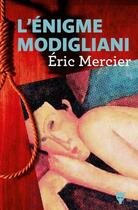-
Nombre de pages : (-)
-
Collection :
(-)
-
Genre :
(-)
-
Thème :
Non attribué
-
Prix littéraire(s) :
(-)
Résumé:
The Most Recognized Dog In Indian Myth Is The Dog In The Mahabharata That Accompanied The Pandavas Not Actually A Dog But Dharma In Disguise. There Are, However, Several More References To Dogs In The Classical Texts. Mentioned For The First Time In The Rg Veda, The Eponymous Sarama Is The Dog... Voir plus
The Most Recognized Dog In Indian Myth Is The Dog In The Mahabharata That Accompanied The Pandavas Not Actually A Dog But Dharma In Disguise. There Are, However, Several More References To Dogs In The Classical Texts. Mentioned For The First Time In The Rg Veda, The Eponymous Sarama Is The Dog Of The Gods And The Ancestor Of All Dogs. In Sarama And Her Children, The Evolution Of The Indian Attitude Towards Dogs Is Traced Through The Vedas, Epics, Puranas, Dharmashastras And Niti Shastras. The Widespread Assumption Is That Dogs Have Always Been Looked Down Upon In Hinduism And A Legacy Of That Attitude Persists Even Now. Tracing The Indian Attitude Towards Dogs In A Chronological Fashion, Beginning With The Pre-Vedic Indus Valley Civilization, Bibek Debroy Discovers That The Truth Is More Complicated. Dogs Had A Utilitarian Role In Pre-Vedic And Vedic Times. There Were Herd Dogs, Watchdogs And Hunting Dogs, And Dogs Were Used As Beasts Of Burden. But By The Time Of The Mahabharata, Negative Associations Had Begun To Creep In. Debroy Argues Convincingly That The Change In The Status Of The Dog In India Has To Do With The Progressive Decline Of The Traditional Vedic Gods Indra, Yama And Rudra (Who Were Associated With Dogs), And The Accompanying Elevation Of Vishnu, Associated With An Increase In Brahmana Influence. Debroy Demonstrates That Outside The Mainstream Caste Hindu Influence, As Reflected In Doctrines Associated With Shiva And In Buddhist Jataka Tales, Dogs Did Not Become Outcasts Or Outcastes. Drawing References From High And Low Literature, Folk Tales And Temple Art, Sarama And Her Children Dispels Some Myths And Ensures That The Indian Dog Also Has Its Day.
Donner votre avis















